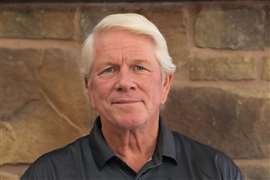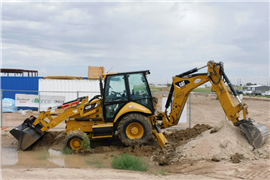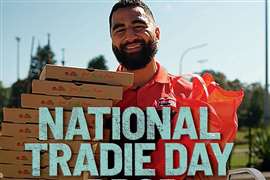Australian Cat dealer predicts rental on the rise
06 June 2022
Operating primarily in the state of Queensland, Australian Cat equipment dealer Hastings Deering has weathered the Covid19 crisis and is now responding to rental demand from Australia’s construction, infrastructure and mining related sectors, writes Belinda Smart.
Headquartered in Brisbane, Queensland, Cat equipment dealer Hastings Deering (Australia) operates 23 business service centres across Queensland, Australia’s Northern Territory, Papua New Guinea, the Solomon Islands and New Caledonia, where it sells, rents, and offers support and parts distribution services.
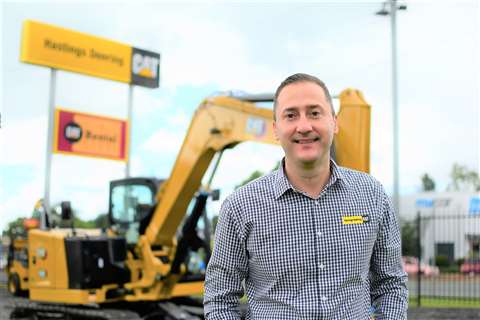 Peter Papastergos, Manager - Rental & Used Equipment, Hastings Deering Australia.
Peter Papastergos, Manager - Rental & Used Equipment, Hastings Deering Australia.
Hastings Deering’s business in Australia has sizeable international backing, having been acquired in 1992 by Asia Pacific group Sime Darby Industrial (SDI) – which also recently acquired heavy equipment rental business Salmon Earthmoving, based in South East Queensland. SDI is one of the world’s largest Cat dealers spanning across Hastings Deering’s region within Australia and the Pacific, along with Malaysia (Tractors Malaysia), Singapore (Tractors Singapore), China (China Engineers) and more recently New Zealand (Terra Cat).
Notwithstanding the global clout of its owner, Hastings Deering looks set to benefit from growing rental activity in the Australian market. With the majority of its Australian rental fleet operating in Queensland (it has a smaller fleet servicing the Northern Territory), all indicators point to growth, according to Peter Papastergos, Manager - Rental & Used Equipment, Hastings Deering (Australia).
Papastergos tells IRN the dealer’s combined equipment sales and rental business currently account for more than 40% of total company sales a year, with the rental and used equipment business representing about 15% of total equipment sales. And he says growth of the rental business is projected in the near term, driven by factors including demand for equipment suited to major construction and infrastructure projects, as well as a growing trend towards rental.
Rental in Australia
A vast land mass, Australia’s discrete state economies contribute to what Papastergos describes as a “large and fragmented” rental market at a national level. The country’s estimated total market size in terms of revenue is AU$8.8bn (€ 5.8 bn) a year and around 8,600 businesses servicing the sector, including: machinery (earthmoving and other heavy construction equipment, cranes and access equipment), scaffolding, forklifts, power generation and portable accommodation (Source: IBISWorld Industry Report L6631 - Machinery and Scaffolding Rental in Australia).
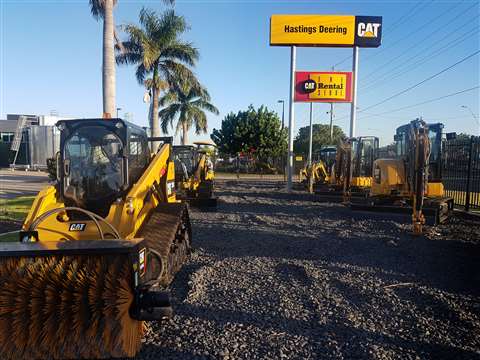 Major schemes are driving demand for Hastings Deering’s products and services. (Photo: Hastings Deering.)
Major schemes are driving demand for Hastings Deering’s products and services. (Photo: Hastings Deering.)
Fragmented maybe, but rental in Australia is also well developed, mature and on the rise.
“The industries we serve rely heavily on equipment hire throughout the various phases of projects and construction cycles, from planning and site preparation through to earthmoving, building and installation,” Papastergos tells IRN.
And with Hastings Deering’s rental business mainly comprising the “dry-hire” – in other words rental without the inclusion of the operator - of earthmoving and heavy equipment for the construction and resource industries, growth in Queensland’s construction sector, across building and heavy industry, mining and infrastructure, is driving demand.
Some ambitious schemes are contributing to this, including the Cross River Rail in Brisbane - a new 10.2 kilometre rail line from that includes 5.9 kilometres of twin tunnels under the Brisbane River and CBD. Another is Carmichael Rail to Port - a 200km narrow-gauge rail project to connect the Carmichael Mine in northern central area of the state to the North Queensland Export Terminal via existing rail infrastructure. Key schemes also include the Bruce Highway, Pacific Highway Upgrades (M1), and mining infrastructure projects.
“Major civil and infrastructure projects rely heavily on core earthmoving products for excavation, loading and hauling rock and dirt with machines such as excavators, wheel loaders, articulated trucks and motor graders in very high demand throughout the project cycles,” he says, adding that demand in the current rental market includes motor graders, wheel loaders, trucks – both articulated and rigid, dozers, excavators and rollers, “a staple part of Hastings Deering’s rental fleet.”
A rental product offering aligned to the needs of key industries and projects, along with a footprint and product support service offering across Queensland and its other markets, have been an important driver of growth, he says.
Recovery and expansion
Despite that growth, like businesses everywhere, Hastings Deering, was impacted by an initial period of uncertainty and disrupted workflow during the early part of the Covid-19 pandemic in 2020; but Papastergos says government stimulus to offset the pandemic supported an increase in construction activity and equipment hire demand across the region over the past 12 months, as has growth in the mining and infrastructure markets; and this is anticipated to support further growth in the foreseeable future.
During the pandemic, the business also operated as an essential service provider to the industries it serves, which minimised the overall impact of early disruptions.
“We were also able to quickly scale back operations and introduce flexible work-from-home arrangements for many of our people, reducing exposure to them and our customers who still relied heavily on Hastings Deering’s support throughout the pandemic – across our business centres and in the field.”
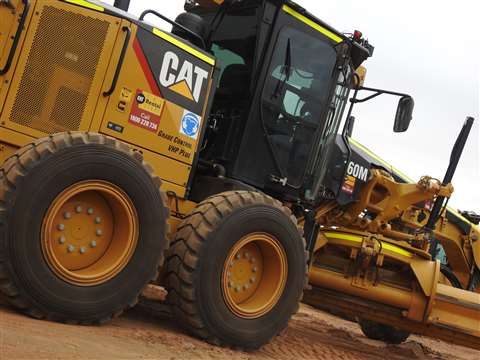 To counter supply chain issues, Hastings Deering has adjusted its forecasting periods from 6-12 months to 12-24 months. (Photo: Hastings Deering.)
To counter supply chain issues, Hastings Deering has adjusted its forecasting periods from 6-12 months to 12-24 months. (Photo: Hastings Deering.)
The supply chain delays triggered by the pandemic contributed to an upsurge in rental demand, with industry having to rely more on immediate supply opportunities through rental providers; “At the same time, meeting that demand remained a challenge during a time of growing construction activity and equipment demand, now and in the foreseeable future,” he says.
“From a rental perspective, the supply chain impacts have been felt mainly for new replacement and growth assets, in terms of the company’s ability to renew and upsize its rental fleet to meet the high market demand.
“To deal with this, the business quickly adopted a more long-range forecasting approach to ensure we are proactively signalling to Caterpillar our future new equipment requirements to support growth in our rental fleet. Typical forecasting periods were previously between six to 12 months, depending on the product, and are now longer-range, anywhere from 12 to 24 months out.”
As it adjusts to these market challenges, Hastings Deering, which was founded in 1932, will also mark its nine decades in business this year with an expansion drive including the growth of its rental fleet size.
“Hastings Deering’s rental fleet is planned to grow in the order of 10% over the next 24 months to capitalise on the projected market growth during that period,” says Papastergos. “Core machine types used in construction and resource industry applications such as excavators, wheel loaders, trucks, motor graders and dozers are a staple part of our existing fleet and our unit numbers across these products will be bolstered as part of our expansion plans.”
Those plans indicate a solid future for Hastings Deering and reflect the gradual but widespread shift to rental in Australia.
STAY CONNECTED



Receive the information you need when you need it through our world-leading magazines, newsletters and daily briefings.
CONNECT WITH THE TEAM









